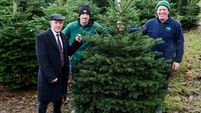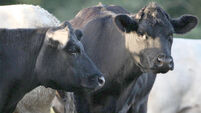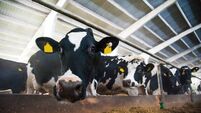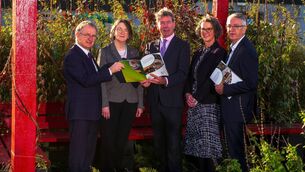Hazell Mullins: Think 'carrot over stick' when working with livestock
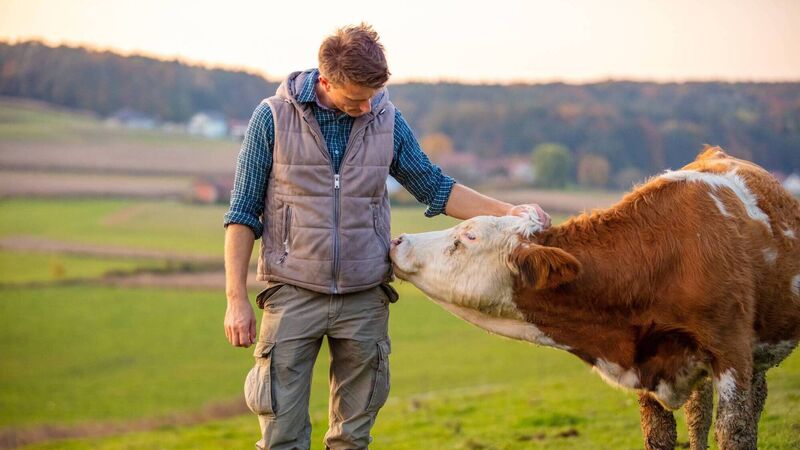
It's important to get calves (and other stock) used to you by interacting whilst feeding to help develop a positive reinforced relationship with their handler, writes farm vet Hazell Mullins.
Last Monday’s was an extremely tough watch, as I am sure it was for all involved in the dairy industry.
Over the last ten years as a vet, I have dedicated my life under oath to upholding animal welfare, and found the abuse that was aired completely unacceptable.
It is deeply disappointing how a minority can affect the reputation of the majority of those involved in the industry that strives every day to keep welfare standards high.
I have been called to treat many a bull calf on farms over the last 10 years - welfare and not gender is always part of the treatment decision plan.
The programme did, however, emphasise the need for more voices in the industry to speak up and promote change, including my own.
I realised that I am fortunate to have a platform that I can use to educate about the importance of appropriate animal handling, management and husbandry.
During my time in vet school, our welfare lectures were hugely based on "The five freedoms":
- Freedom from Hunger and Thirst.
- Freedom from Discomfort.
- Freedom from Pain, Injury or Disease.
- Freedom to Express Normal Behaviour.
- Freedom from Fear and Distress.
This documentary has made me consider the role we can all play in ensuring these five freedoms are a calf's absolute right day in and day out from day one.
The basic principles of handling bovine animals are based on trigger points on the imaginary line circling the animal: The” flight zone” is the area at which the animal reacts to your presence and moves away from you; age and breed will have an influence on this distance.
I joke with Dad that my pet bullock, No. 1345, seems to have no “flight zone” as you can walk right up to rub him; however, even though he is comfortable with human presence, he does still have a “blind spot” directly behind him.
It's important to be aware that this “blind spot“ can cause the animal to get a fright if a handler appears suddenly behind them.
Rather than sticks, the “point of balance” is the true key to moving an animal, it is an imaginary point located on the shoulder area. If you walk towards this “point of balance” either from the front or the rear, you can influence where you want the animal to move, without the need for any jabbing or aggression.
In the parlour, if I want a cow to move up, I can quickly get behind her shoulder and she will move forward calmly.
When it comes to handling calves at times, like tagging and vaccinating, the main priority is to stay calm and keep noise levels to a minimum.
Now, I am guilty of whistling when I am around my calves, but even that is something which I need to be more conscious of going forward.
It's important to get calves used to you by interacting whilst feeding to help develop a positive reinforced relationship with their handler. If they are agitated prior to handling, let them calm down before proceeding to avoid added stress.
Under no circumstances should a stick, including the “wavin” pipe ever be used on calves. I find making small flags from feed bags very effective for moving calves, or if you can, investing in the special paddles available for loading calves would be very worthwhile.
The phrase “carrot over stick” works so well in cattle; a bucket of ration or milk can help move calves to where you want them to go; it’s a technique I use all the time in cows when using the crush head gate.
Tail twisting is not suitable in calves and can result in breaks or even can dislocation, which can be detrimental to nerve function in the hind region.
Similarly, ear twisting is completely unacceptable as a form of restraint due to the sensitivity of the ear. Calves do need to be restrained for tasks such as tagging, but this can be done by placing a hand under their neck whilst the other hand is placed on their hindquarters. Performing this with their hindquarters in a corner will help eliminate any side movement and reduce stress for the animal.
Calves like to have their friends close by, and always try and move in groups where they will follow the brave leader at the front. In the crush, they stay calmer if they are surrounded on all sides by other calves, somewhat like a comfort blanket for them.
A bit like children, calves are not a fan of the dark; when moving them make sure that the house, pen or trailer is well-lit with no dark corners. When transporting un-weaned calves, it is essential to have given fed them half of their daily milk allowance not more than two hours before transportation.
I love my cattle dog Glen dearly, but I always put him in when it comes to moving calves as to him, they are more robust adult cows.
Even the best cattle dogs (not that Glen is) can scare calves and increase the risk of injury. The same message goes for quads enthusiasts - always stay well behind the last calves and don’t rush them as it's then when the injuries could occur.
Handling issues of calves was only one issue raised by RTE investigates; I understand that the Department of Agriculture is conducting its own investigation into the abuse of calves witnessed.
In the meantime, it is the duty of everyone involved in the dairy industry to have a no-tolerance approach to animal abuse and use our voices for change.
I would like to take this opportunity to thank my fellow Farm Exam columnist Paula Hynes and her husband Peter for their representation of the Irish dairy farmer on the programme; she is truly a wonderful ambassador for the industry.
- Hazell Mullins BVM BVS, is a large animal vet based in Carrignavar, Co Cork.



